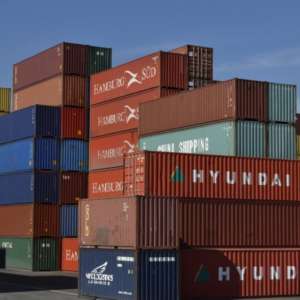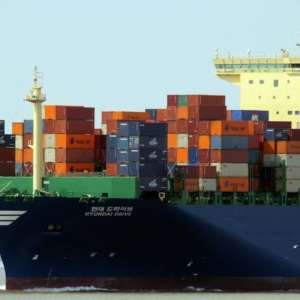The container shipping industry has long had a healthy market environment with a wide selection of carriers to choose from. But in just the last few years, the industry has seen a sharp increase in consolidation. Some experts warn that we’re witnessing the formation of a loose oligopoly in container shipping. So how did this happen? And how can shippers adjust to this change?
The uptick in consolidation began as a reaction to difficult market conditions caused by the 2008 financial crisis. For years, the container shipping industry struggled with low freight rates, dwindling earnings, and poor financial returns. This was felt particularly in terms of overcapacity: weaker global trade and decreased demand coincided with the arrival of very large container ships that had been ordered years earlier. This was a contributing factor in a collective operating loss of $3.5 billion last year. As the market has been plagued by varying degrees of overcapacity, carriers launched intense price wars in an attempt to gobble up market share.
As a reaction to this precarity, a wave of consolidation has been observed since 2016. Container lines have concluded a spate of mergers and acquisitions, and formed larger strategic shipping alliances that resulted in a surge of market concentration. As reported by Lars Jensen of Sea-Intelligence Consulting, around 2000, the 10 largest liner shipping companies had a market share of 12%. Today, that share has rocketed to 82%. The rate only seems to be growing exponentially– as of January 2018, the top 15 container lines accounted for just over 70% of all shipping capacity; as of June, the top 10 controlled almost 70%. On major trade routes, the market structure is now tantamount to an oligopoly. Since the turn of the century, 60 out of the 100 largest carriers have disappeared through mergers, acquisitions, and bankruptcies. There are no signs this trend is slowing, which could mean that in another 20 years, only 16 out of the top 100 carriers from 2000 exist.
The major fear, of course, is that consolidation threatens competition, putting shippers on the back foot. Shippers and trade could be negatively affected if consolidation leads to reduced competition, constrained supply, and higher rates and prices. Container lines that are not in alliances will also find it harder to compete. Smaller lines in niche markets are already losing ground to mega-alliances. Certain ports may also be left out or lose market share as lines have stronger bargaining power: for example, Port Klang in Malaysia handled less cargo in 2017 as alliance members limited their calls at the port. Furthermore, by reducing the number of port calls, container shipping connectivity at the country level may be undermined, meaning shippers may end up having to redefine their supply chains.
Oligopoly, however, is not necessarily a purely negative thing. In fact, alliances can allow container lines to reduce costs, better manage capacity, and enhance efficiency. Alliances allow container lines to participate as global players, reducing operating costs through asset sharing. Cooperation could also bring order to a market that is in need of better supply management. In the face of overcapacity issues, pooling cargo could improve economies of scale and reduce operating costs. By expanding and combining, container lines could offer a wider range of services and invest further in technological upgrades.
The fact is that oligopolies do not necessarily equal collusion. Rather, they mean that complexities are reduced, so each line is better able to manage its operational and commercial resources. For shippers, this can translate into more efficient and extensive services offered by container lines– and, if the savings are passed on, may lead to lower rates and prices. Alliances have other benefits: one alliance has put in place an emergency fund for its members in the event of a bankruptcy. The elimination of alliances would reduce port-to-port coverage, requiring more trans-shipment and raising costs and transit times.
Ultimately, carriers can’t create more demand by lowering prices. That only serves to shift the market share between carriers. What they can control is supply. Just last year, in anticipation of a weak trans-Pacific peak season, carriers withdrew capacity, aiming to improve freight rates. This, along with unprecedented peak season volume as a result of frontloading cargo due to the US-China tariff dispute, resulted in the strongest peak season rate environment in a decade. Entering peak season this year, carriers preemptively curtailed capacity growth using blank sailing in the trans-Pacific routes. With fewer main players, the market impact of action like blanking individual sailing becomes more predictable. As a result, don’t expect blank sailings to stay the exception; rather, they’re becoming efficient tools for large carriers managing supply.
Still, industry experts want to keep an eye on the ongoing impacts of consolidation. The Intergovernmental Group of Experts on Competition Law and Policy of UNCTAD, in July 2018, called for further monitoring and analyzing the effects of cooperative arrangements and mergers on freight rates and frequency, efficiency, and reliability. Rules governing consortia may need to be revisited, and new regulations may be needed to prevent market power abuse by lines. In the meantime, shippers should examine their own freight procurement strategies: if they’re contingent upon fierce competition between carriers, they’ll soon need to be adjusted.
Red Arrow Logistics has the scale and scope to meet the budget and schedule requirements of the largest and smallest companies alike. If we can be of assistance, please email me at liz.lasater@redarrowlogistics.com or give us a call 425-747-7914



